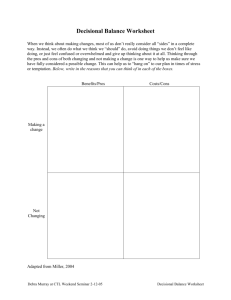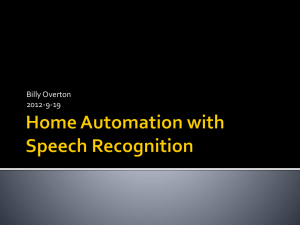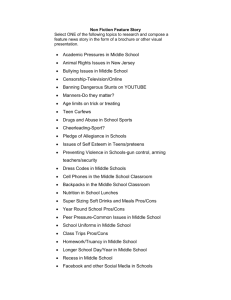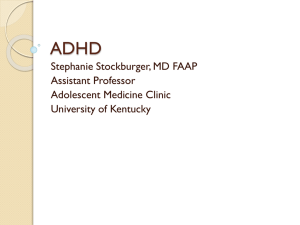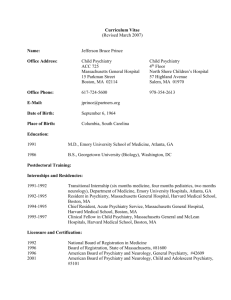Adolescent Therapy: ADHD - Stop, Think, and Act
advertisement
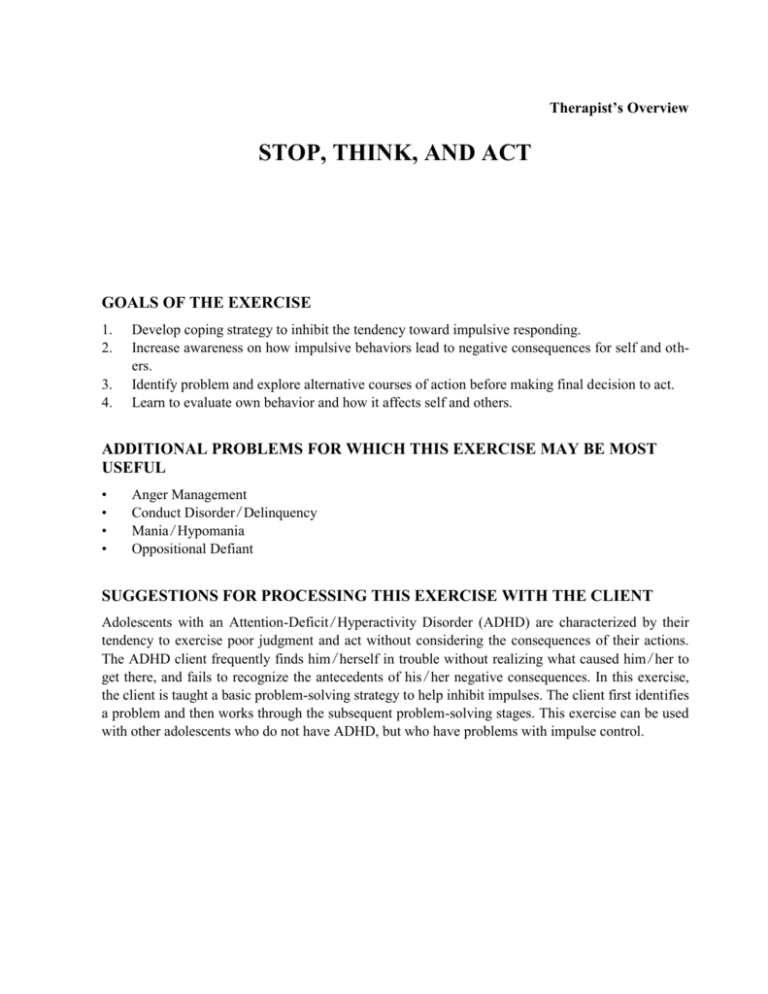
Therapist’s Overview STOP, THINK, AND ACT GOALS OF THE EXERCISE 1. 2. 3. 4. Develop coping strategy to inhibit the tendency toward impulsive responding. Increase awareness on how impulsive behaviors lead to negative consequences for self and others. Identify problem and explore alternative courses of action before making final decision to act. Learn to evaluate own behavior and how it affects self and others. ADDITIONAL PROBLEMS FOR WHICH THIS EXERCISE MAY BE MOST USEFUL • • • • Anger Management Conduct Disorder/Delinquency Mania/Hypomania Oppositional Defiant SUGGESTIONS FOR PROCESSING THIS EXERCISE WITH THE CLIENT Adolescents with an Attention-Deficit/Hyperactivity Disorder (ADHD) are characterized by their tendency to exercise poor judgment and act without considering the consequences of their actions. The ADHD client frequently finds him/herself in trouble without realizing what caused him/her to get there, and fails to recognize the antecedents of his /her negative consequences. In this exercise, the client is taught a basic problem-solving strategy to help inhibit impulses. The client first identifies a problem and then works through the subsequent problem-solving stages. This exercise can be used with other adolescents who do not have ADHD, but who have problems with impulse control. EXERCISE V.C STOP, THINK, AND ACT Adolescents with an Attention-Deficit/Hyperactivity Disorder (ADHD) often find themselves in trouble without realizing what caused them to get there. It is not uncommon for the ADHD teenager to try to solve problems by quickly rushing into a situation without stopping and thinking about the possible consequences of his/her actions. The failure to stop and think causes negative consequences for both self and others. If this sounds all too familiar and you are tired of finding yourself in trouble because of your failure to stop and think, then this exercise is designed for you. In this exercise, you are taught to use basic problem-solving steps to deal with a stressful situation. By following these steps, you will hopefully find yourself in less trouble with others and feel better about yourself. 1. The first step in solving any problem is to realize that a problem exists. At this beginning stage, you are asked to identify either a major problem that you are currently facing or a common recurring problem that troubles you. Talk with your parents, teachers, friends, or peers if you have trouble selecting a problem that you would like to focus on solving. Identify the problem: 2. After identifying the problem, consider three different possible courses of action to help you solve or deal with the problem. List the pros and cons of each possible course of action. Record at least three different pros and cons for each course of action. First possible course of action to be taken: Pros Cons Second possible course of action to be taken: Pros Cons Third possible course of action to be taken: Pros Cons 3. Next, review the pros and cons of each one of your possible courses of action. At this point, you are encouraged to talk with a teacher, parent, friend, or peer to help you choose a final plan of action. 4. Identify the course of action that you plan to follow: 5. What factors influenced you to choose this course of action? 6. What advice or input did you receive from others that influenced your decision? 7. Now it is time to follow through on your plan of action. In the space provided, describe the events that occurred when you followed through with your plan of action. You are in the final stage of this exercise. You have identified the problem, considered different possible courses of action, made a decision, and followed through on your plan of action. Your final task is to evaluate the results or success of your plan of action. Please respond to the following questions. 8. What were the results of your plan of action? 9. How do you feel about the results? 10. How did your plan affect both you and others? 11. What did you learn from this experience? 12. What, if anything, would you do differently if you were faced with the same or a similar problem in the future?




